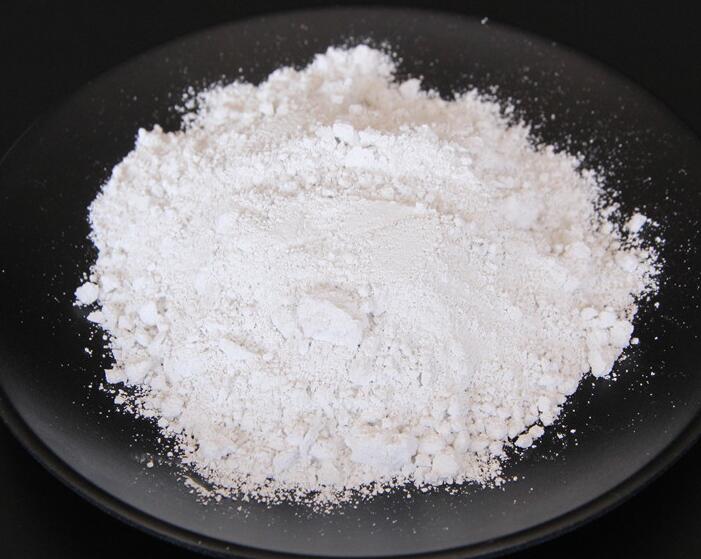Surface modification of magnesium hydroxide: the key to improving the flame retardant properties of PA66

Magnesium hydroxide (Mg(OH)₂), as a halogen-free and environmentally friendly flame retardant, shows great potential in improving the flame retardant properties of polymer materials. However, unmodified magnesium hydroxide has poor dispersion and compatibility in polymer substrates, which affects its flame retardant effect. Through surface modification, the dispersion and compatibility of magnesium hydroxide can be significantly improved, thereby improving its flame retardant properties in polymers. This article will introduce in detail the preparation method of modified magnesium hydroxide and its flame retardant application in PA66.
Magnesium hydroxide (Mg(OH)₂) is widely used in polymer materials, especially in nylon 66 (PA66), due to its low toxicity, halogen-free, and environmental protection. However, its performance is greatly affected by its strong surface polarity, poor compatibility with polymers, and difficulty in uniform dispersion. In order to improve its dispersion and compatibility in PA66, researchers have adopted a variety of surface modification techniques.
Preparation of modified magnesium hydroxide
Raw material preparation: select high-purity magnesium hydroxide powder as the starting material, and a suitable coupling agent, such as silane coupling agent or titanate coupling agent.
Mixing: Mix magnesium hydroxide powder and coupling agent in a predetermined ratio to ensure full contact between the components.
Modification treatment: Use wet modification to dissolve magnesium hydroxide powder and coupling agent in a solvent, and perform ultrasonic treatment with ultrasonic treatment equipment to make the coupling agent evenly distributed on the surface of magnesium hydroxide.
Washing and drying: Wash the modified magnesium hydroxide powder multiple times with deionized water to remove unreacted coupling agent and other impurities, and then dry to obtain the modified magnesium hydroxide powder.
Evaluation of modification effect
Morphology analysis: Use scanning electron microscope (SEM) and transmission electron microscope (TEM) to observe the morphology and particle size distribution of magnesium hydroxide powder before and after modification, and evaluate its dispersion and morphology.
Component analysis: Use X-ray diffraction (XRD) and energy-dispersive X-ray spectroscopy (EDX) to analyze the crystal structure and element distribution of the magnesium hydroxide powder before and after modification to confirm the presence of the coupling agent.
Specific surface area analysis: The specific surface area of the magnesium hydroxide powder before and after modification was measured by the Brunauer-Emmett-Teller (BET) method to evaluate its adsorption performance.
Flame retardant application of modified magnesium hydroxide in PA66
Raw material preparation: Mix the modified magnesium hydroxide powder with PA66 resin and other additives in a predetermined proportion.
Mixing and granulation: Use a twin-screw extruder for melt mixing to prepare particles of modified magnesium hydroxide/PA66 composite material.
Molding and testing: Injection molding or compression molding of composite particles is prepared into standard specimens, and flame retardant performance tests are conducted, including vertical burning test (UL-94), limiting oxygen index (LOI) and cone calorimeter ( Cone Calorimeter) etc.
Experimental results and discussion
Experimental results show that the dispersion and compatibility of surface-modified magnesium hydroxide in PA66 are significantly improved, thereby improving the flame retardant properties of the composite material. The modified magnesium hydroxide/PA66 composite material achieved a higher flame retardant level in the UL-94 test, and the LOI value was also improved. The cone calorimeter test results showed that the heat release rate and total heat release were significant. reduce.
Experimental results and discussion
Morphological analysis:
SEM and TEM results show that the modified magnesium hydroxide powder has a smooth surface, no obvious agglomeration, and significantly improved dispersion.
The modified magnesium hydroxide powder has a uniform particle size distribution and regular morphology.
Ingredient analysis:
XRD and EDX analysis showed that the modified magnesium hydroxide powder had high purity and no obvious impurity peaks, and the presence of coupling agent was detected on the surface, confirming the success of the modification.
Specific surface area analysis:
BET test results show that the modified magnesium hydroxide powder has a slightly increased specific surface area and improved adsorption performance.
Thermal stability:
TGA results show that the thermal stability of the modified magnesium hydroxide powder at high temperatures is slightly improved, and the thermal decomposition temperature increases from 340°C to 350°C.
DSC results show that the thermal decomposition kinetic parameters have improved and the thermal decomposition process is smoother.
Flame retardant properties:
UL-94 test results show that the modified magnesium hydroxide/PA66 composite material reaches the V-0 level and has good flame retardant properties.
The LOI test results show that the LOI value increased from 22% to 30%, and the flame retardant performance was significantly improved.
Cone calorimeter test results show that the heat release rate and total heat release are significantly reduced, and the fire hazard is reduced.








